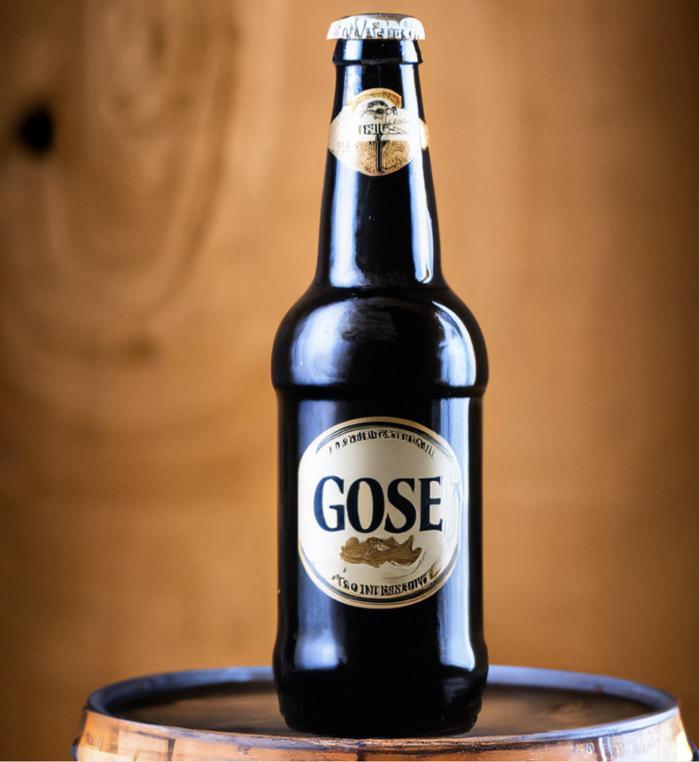As you crack open a cold one with friends or enjoy a refreshing beer after a long day, have you ever wondered about the sodium content in your favorite brew? For those watching their salt intake, it’s essential to know how much is present in everyday foods and drinks—including various types of beers.
Yes, beers have sodium because the water, grains and yeast used contain sodium (usually in the form of sodium chloride also known as ordinary table salt!).
However, the amount of sodium in beer varies by brand and type. The sodium content can range from as little as 5 milligrams per 3.38 ounces (100ml) of beer to as much as 500 milligrams per one glass serving.
This is less than what most tap water sources contain (3.38 mg per ounce on average!) so there is really nothing to worry about when it comes to beer and salt intake.
It is important to note that the sodium content of beer is just one factor to consider when monitoring sodium intake, as many other foods and beverages may contain much higher levels of sodium.
Additionally, some craft breweries may add ingredients that could increase the sodium content of their beers, so it is always a good idea to check the nutrition label or contact the brewery directly for more information if you are very sensitive to salt.
In this blog post, we explore the role of sodium in beer production, compare sodium levels among popular types of beers and brands, discuss health implications associated with sodium consumption from beer, and provide tips on choosing low-sodium options.
Understanding Sodium In Beer
Sodium plays a role in the brewing process as the yeast needs the mineral to grow and ferment optimally.
It is not that salt is added directly to the beer, but the amount found in the water used will affect the brewing process, flavor, as well as head retention and stability of beer.

Sodium is a naturally occurring element that plays a vital role in various biological processes, including maintaining the balance of fluids within our bodies, regulating blood pressure, and ensuring proper nerve function.
In beer production, sodium is essential as it contributes significantly to the overall taste profile of the final product.
Though not added explicitly for its saltiness during brewing, trace amounts of sodium are often found in water sources used for beer production. Calcium and magnesium concentrations determine how ‘hard’ or ‘soft’ the water is; meanwhile, sodium levels influence mouthfeel and perceived body or fullness in beer.
For example, beers brewed with soft water tend to have a lighter body and more delicate flavors compared to those made with hard water.
Does Beer Naturally Contain Sodium?
Sodium is an essential mineral needed by the body in small amounts. While beer is made from four basic ingredients – water, malted grains, hops, and yeast – it can naturally contain some amount of sodium depending on the brewing process.

Generally, the sodium content in beers comes from minerals present in the water used during brewing and is rarely added as flavor enhancers. However, this amount is usually quite low and does not significantly impact one’s daily sodium intake.
For instance, a 12-ounce serving of regular beer contains only about 10-20 milligrams of sodium while light beer has even less at approximately 5mg per serving.
Sodium Content In Different Types Of Beer
The sodium content in beer varies depending on the type of beer, with light beers having the lowest and hop-forward beers having higher amounts.
Here is a table listing some different beers and their sodium content per 12-ounce serving:
| Beer Brand/Type | Sodium Content (mg) per 12oz |
|---|---|
| Budweiser | 10-10.6 [7] |
| Miller Lite | 16 [6] |
| Coors Light | 18 [6] |
| Heineken | 11 [2] |
| Corona | 14 [2] |
| Guinness Draught | 11 [2] |
| Sierra Nevada Pale Ale | 6 [2] |
| Gose | 140-560 |
I wrote a bit more about Gose beers and their salt content here.
Light Beers
Light beers are a popular choice among people who want to enjoy beer without worrying about consuming too many calories or sodium.

These types of beer generally have lower alcohol content and fewer calories than regular beers, which makes them a favorite among health-conscious drinkers.
Interestingly, light beers also tend to have lower sodium levels than their regular counterparts, with around 5-10 mg per 12 ounces, but there are definitely examples of higher concentrations (see table above!)
Popular light beer brands like Michelob Ultra and Amstel Light contain even less sodium – around 5 mg per serving – making them a great option for those watching their salt intake while still enjoying the taste of a refreshing cold brew.
Pilsners And other Lagers
Pilsners and lagers are two of the most popular types of beer around the world. While they may differ in taste, color, and brewing techniques, they have one thing in common: low sodium content compared to other types of beer.
Pilsners usually contain between 5-10 mg of sodium per 12 ounces serving while lagers usually contain below 15mg per 12 ounces serving.
However, it’s worth noting that some specialty versions of these beers can have a higher sodium content due to the use of different ingredients or brewing methods. It’s always best to check the nutritional information on the label if you’re specifically looking for low-sodium options.
Ales And Stouts
Ales and stouts are two popular types of beer that are known for their deep, rich flavors. While many people assume that dark beers like stouts would have a higher sodium content than lighter beers, the truth is that the amount of sodium in these types of beer can vary widely depending on the brewing process.

Some hop-forward ales can have a sodium content ranging from 25-100 mg/l.
For those looking to reduce their sodium intake while still enjoying flavourful brews, it’s important to read labels and check for lower-sodium options.
Artisanal breweries may offer low-sodium versions of classic styles such as pale ale and porter with as little as 5 mg per serving, while some larger brewers now list nutritional information directly on their packaging.
Imported Vs. Domestic Beers
When it comes to comparing imported and domestic beers, there can be a significant difference in their sodium content. Imported beers may have higher levels of sodium due to the water used in their brewing process or the added ingredients that are not commonly found in domestic brews.
On the other hand, many American-made beers strive for lower sodium content as part of their marketing efforts towards health-conscious consumers.
Overall, it’s difficult to make sweeping generalizations about the inside nutrition of domestic versus imported beer without analyzing individual brands.
Budweiser And Other High Sodium Beers
High-sodium beer options include some popular brands such as Gose, Budweiser, Miller Lite, and Coors Light. According to the USDA food database, a 12 oz serving of Budweiser contains more than 10 mg of sodium.
While this may not sound like much, it can add up quickly if you’re drinking several beers in one sitting.
If you’re looking for low-sodium alternatives to these popular beer brands, consider trying non-alcoholic or craft beers with lower sodium content. Some examples include Heineken and Dogfish Head Slightly Mighty IPA.
Gose beers and their high salt content
Gose beers are a unique and refreshing style of beer known for their tart, slightly salty taste. They originated in Germany and have gained popularity in recent years among craft beer enthusiasts around the world. Gose beers typically contain a moderate amount of salt, ranging from 140 to 560 mg per 12 ounces.

The brewing process of gose beers follows traditional beer-making techniques with a few distinctive additions. Like other beers, gose is brewed using malted grains (usually barley), water, hops, and yeast. However, what sets gose apart is the addition of salt and souring agents such as lactic acid bacteria, particularly Lactobacillus. This bacteria contributes to the characteristic tartness of gose beers.
Salt plays a crucial role in the taste profile of gose beers. It adds a subtle saline character that balances the tartness and enhances the overall flavor experience. The saltiness in gose is usually mild and not overpowering.
It provides a unique contrast to the sourness, creating a well-rounded and refreshing beverage. The exact amount of salt added can vary depending on the brewer’s preference and the desired flavor profile.
During the fermentation process, the addition of lactic acid bacteria causes the pH of the beer to drop, resulting in a sour taste. This process is similar to how other sour beers, such as Berliner Weisse, are brewed.
The combination of the sourness from the bacteria and the slight saltiness creates a distinctive flavor profile that sets gose beers apart from other beer styles.
The presence of salt in gose beers also affects their shelf life. The salt acts as a preservative, inhibiting the growth of bacteria and other microorganisms that could spoil the beer.
As a result, gose beers often have a longer shelf life compared to other non-sour beer styles. However, it’s important to note that like any beer, freshness is still a crucial factor in maintaining the best flavor and quality.

When it comes to food pairings, gose beers offer versatility and can complement a range of dishes. The tartness and saltiness of gose can help cut through fatty or rich flavors, making it an excellent pairing for seafood, especially shellfish like oysters or shrimp.
The salt content in gose can also enhance the flavors of savory dishes like cured meats, cheeses, and pickled vegetables. Additionally, the refreshing and thirst-quenching nature of gose makes it a popular choice for enjoying on its own during hot summer days.
In summary, gose beers are brewed using traditional beer-making techniques with the addition of salt and souring agents. The salt content contributes to the beer’s unique taste profile, providing a subtle, balancing saltiness to the tartness.
The salt acts as a preservative, extending the shelf life of gose beers, and the style pairs well with seafood, cured meats, and pickled foods. Gose beers offer a refreshing and distinctive drinking experience for those seeking a tangy, lightly salty beverage.
Is Sodium In Beer Bad for You?
Excess sodium intake has been linked to high blood pressure and other health issues, making it important to consider the sodium content of beer. In this section, we’ll explore how much sodium is too much, as well as compare the levels found in different types of beers.
Sodium Intake And Blood Pressure
Excessive sodium intake has been linked to high blood pressure, a condition that affects millions of people worldwide. While beer generally does not cause much change in blood pressure for an average person with no dietary restrictions, it’s important to monitor your overall sodium intake if you’re a regular beer drinker.
In comparison to other foods and drinks, one can of regular beer contains around 14 milligrams of sodium which is relatively low. Soft drinks contain approximately four times the amount found in beer at about 55-65 mg per serving.
However, hop-forward beers like IPAs can have higher levels ranging from 25-100 mg/l.
How Much Sodium Is Too Much?
Consuming too much sodium can lead to health problems such as high blood pressure, heart disease, and stroke. The American Heart Association recommends that individuals consume no more than 2,300 milligrams of sodium per day, with an ideal limit of 1,500 milligrams for most adults.
This means that you would have to drink 1,380 oz of beer to surpass the recommended daily sodium intake, which is going to be challenging for other obvious reasons…
However, most Americans consume about 3,400 milligrams per day on average – but most of this does not come from beer!
Sodium Content In Beer Vs. Other Common Foods And Drinks
Comparing the sodium content in beer to other common foods and drinks can provide valuable insights into how beer stacks up in terms of sodium intake.
The following table presents the sodium content of beer and various popular foods and beverages to give you a better understanding of where beer fits in your overall sodium consumption.
| Food or Drink | Sodium Content |
|---|---|
| Regular Beer (12 oz) | 10-20 mg |
| Light Beer (12 oz) | 5 mg |
| Soft Drink (12 oz) | 40-80 mg |
| Fast Food Hamburger | 500-1000 mg |
| Pizza (1 slice) | 640-960 mg |
| Chicken Noodle Soup (1 cup) | 600-1000 mg |
| Pretzels (1 oz) | 300-600 mg |
As shown in the table, beer has a relatively low sodium content compared to other common foods and drinks.
Light beer, in particular, has a notably lower sodium content than regular beer. While it’s important to keep an eye on sodium intake, enjoying a beer in moderation generally won’t contribute significantly to overall sodium consumption.
However, it’s always a good idea to look for low-sodium options and consume beer and other foods and drinks responsibly to maintain a balanced, healthy diet.
Can sodium be a good thing in beer?
Salt is a common ingredient used in cooking to enhance flavor and bring out the natural tastes of ingredients. Similarly, in beer brewing, salt can play a vital role in improving the overall flavor and mouthfeel of the finished product. While the use of salt in brewing is often associated with sour beers, it can be used in a variety of beer styles to great effect.
One of the primary benefits of using salt in beer brewing is its ability to balance the sweetness of malted grains. When added to the brewing process, salt can enhance the overall flavor profile of the beer by bringing out the subtle sweetness of the malt. This balance is especially important in beers with a high alcohol content or residual sugar, such as barleywines or Belgian-style ales.

Salt can also contribute positively to the mouthfeel of beer. When added in small amounts, salt can help to soften the harshness of bitter hops and create a smoother, more rounded finish. Additionally, salt can enhance the perception of body and mouthfeel, creating a fuller, more satisfying drinking experience.
Another benefit of using salt in brewing is its ability to enhance the aroma and flavor of hops. Hops contain compounds called iso-alpha acids that are responsible for the characteristic bitterness of beer.
Salt can help to reduce the perception of bitterness and bring out the more nuanced flavors and aromas of the hops, such as floral, citrus, or pine notes.
While salt is often associated with sour beers, it can also be used to great effect in other styles. For example, adding salt to a German-style wheat sour beer (known as a Gose) can create a unique flavor profile that balances the tartness of the beer with a salty finish. Similarly, salt can be added to a Belgian-style saison to enhance the spiciness of the yeast and create a more complex flavor profile.
In addition to enhancing the flavor and mouthfeel of beer, salt can also play a practical role in the brewing process. Salt can help to prevent bacterial growth and ensure a stable fermentation, especially in sour beers. Additionally, salt can be used to adjust the pH of the brewing water, which can have a significant impact on the final flavor and clarity of the beer.
It is worth noting that the use of salt in brewing should be done with care and in moderation. Adding too much salt can create an unpleasant, briny taste that overwhelms the other flavors in the beer. Additionally, different types of salt can have different effects on the final product. For example, sea salt may contribute a different flavor profile than table salt or kosher salt.
In conclusion, salt can be a valuable ingredient in beer brewing, contributing to a more balanced, flavorful, and satisfying drinking experience. By enhancing the sweetness of malted grains, softening the bitterness of hops, and improving the overall mouthfeel of the beer, salt can create a more complex and enjoyable beer. However, as with all brewing ingredients, it is important to use salt in moderation and with careful consideration of its impact on the final product.
Which Beers To Choose To Avoid Sodium (and why it does not matter!)
Lighter beers generally contain less malt, which is a significant source of sodium in beer. Darker beers, on the other hand, are typically brewed with roasted malts that can contain higher amounts of sodium. Therefore, choosing lighter beers over darker ones may help reduce sodium intake.
However, it’s worth noting that beer is not generally considered a high sodium source. According to the USDA, a 12-ounce serving of regular beer contains only about 5-10 milligrams of sodium. This is a relatively low amount compared to other food and beverage options.
Additionally, beer works as a diuretic, which means it promotes the production of urine and may cause some individuals to lose more sodium than they gain. However, this effect may vary depending on factors such as individual physiology and alcohol consumption levels.
In summary, while lighter beers may contain less sodium than darker beers, beer in general is not a significant source of sodium. Additionally, the diuretic effect of beer may lead to a net loss of sodium in some individuals. However, it’s important to consume alcohol in moderation and consult with a healthcare professional regarding any concerns about sodium intake.
Tips For Choosing Low-Sodium Beer
If you’re trying to reduce your sodium intake while still enjoying a cold beer, here are some tips for choosing low-sodium options:
1. Choose light beers: Light beers typically have lower sodium content than regular beers, so opt for those instead.
2. Read labels: Look for labels that indicate low sodium content. Some beer brands may even advertise themselves as “low-sodium” on their packaging.
3. Go for craft beer: Many craft breweries produce beer with natural ingredients and without added preservatives, which can sometimes result in lower sodium content.
4. Avoid high-sodium beer brands: Certain popular brands of beer, such as Budweiser, can have higher levels of sodium than others. Check the nutritional information before making your purchase.
5. Consider non-alcoholic alternatives: Non-alcoholic beer is a great option if you want to avoid the alcohol and keep your sodium intake in check.
Remember that even low-sodium beers should be consumed in moderation to prevent any negative health effects. And always consult with a healthcare professional before making any significant changes to your diet or alcohol consumption habits.
Enjoying Your Beer Without Worrying about Sodium Intake!
You should not worry about drinking beers in terms of sodium intake because beers generally have very low levels of sodium. Sodium is an essential mineral that helps regulate various bodily functions, but excessive sodium intake can lead to health problems such as high blood pressure, heart disease, and stroke.
In general, a typical 12-ounce (355 ml) serving of beer contains very little sodium, usually less than 10 milligrams (mg). This amount is considered negligible compared to the recommended daily intake of sodium, which is around 2,300 mg per day for most adults.
However, it is worth noting that some specialty beers and flavored malt beverages may contain higher levels of sodium due to added ingredients such as fruit juice or salt. Therefore, it is important to check the nutrition label or consult with a healthcare professional if you have any concerns about your sodium intake from beer.




